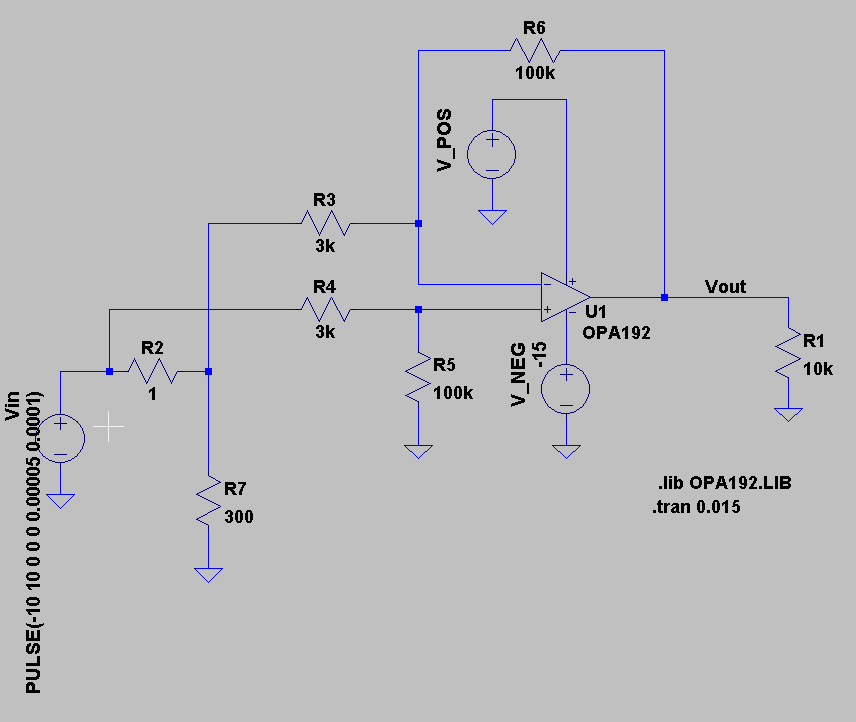Hi,
I'm working on the power supply requirements for a signal conditioning system and I'm currently analyzing the impacts of power supply ripple on output error.
I'm doing my analysis based on a previous blog post (e2e.ti.com/.../my-amplifier-has-high-psrr-so-i-don-t-need-to-worry-about-supply-variation-right) but this post doesn't cover what happens when the noise signal frequency is greater than the closed loop bandwidth.
Here is an example:
The circuit above (simplified) is used for measuring the output current of a driver, which is driving an external load (R7). Considering that the power supply presents a 125 mV ripple and a switching frequency of 1 MHz, this would give:
OPA192 PSRR @ 1 MHz: ~23 dB
Vos = Vs/(10^(PSRR/20)) = 8.85 mV
The closed loop noise gain is:
Gcl = 1 + R6/R3 = 34.33
Therefore:
Vout = Vos * Gcl = 304 mV.
Considering that the output signal's valid range (Vout) is +-5V, this 304 mV corresponds to more than 3% of full scale.
However, the noise signal frequency is greater than the closed loop bandwidth, given by:
BWn = GBW/Gcl = 10/34.33 = 291 kHz.
What is the expect output error in this case?
My simulation results (figure below), shows the supply voltage (V(n002)), the load current and Vout. A 290 mV oscillation can be seen in Vout.
Are these results correct? Or there should be some attenuation due to the closed loop bandwidth?
Regards,
Filipe



